If you want to have an interesting and enriching time with plenty of impressions for the soul, visit the Bali Zoo. For children, it's a special experience, and some even buy season tickets to take them there more often.
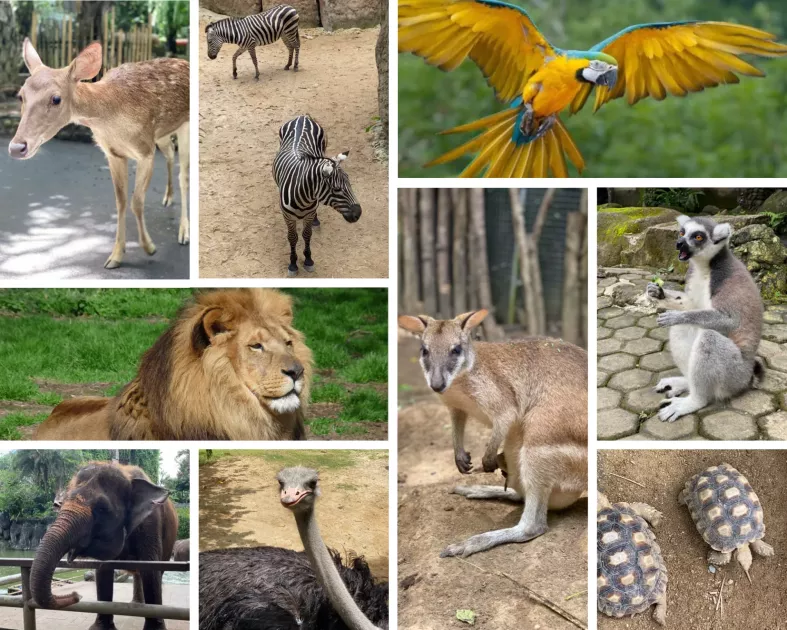
The zoo is located on a large territory about twenty minutes south of Ubud, and almost all the animals live in spacious enclosures under relatively good conditions.
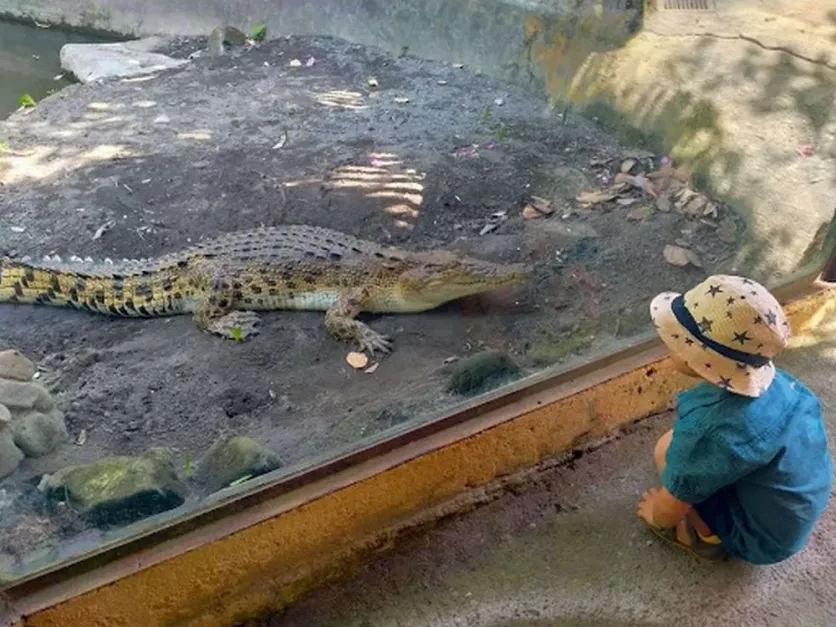
As you explore the park, you will immediately feel the humid equatorial climate of the island. At times, it can get a bit stuffy, so the article describes the routes and paths in detail, ensuring you can see everything without getting too tired, as the walk can be quite long.
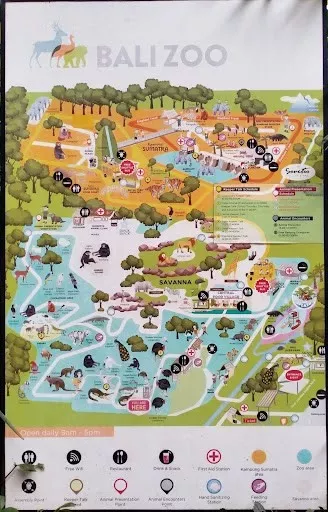
The zoo begins with a beautiful and convenient entrance, featuring a spacious hall with ticket booths on the left and shops with water and cola on the right. There are a couple of coffee tables, and behind them are toilets (it's better to buy drinks in advance, as everything here is relatively expensive). There are two parking lots: one in front of the entrance and another, more spacious one, to the left. At the entrance to the territory, guards distribute parking tickets – they are free, so there's no need to worry. Just tell them how many people are with you.
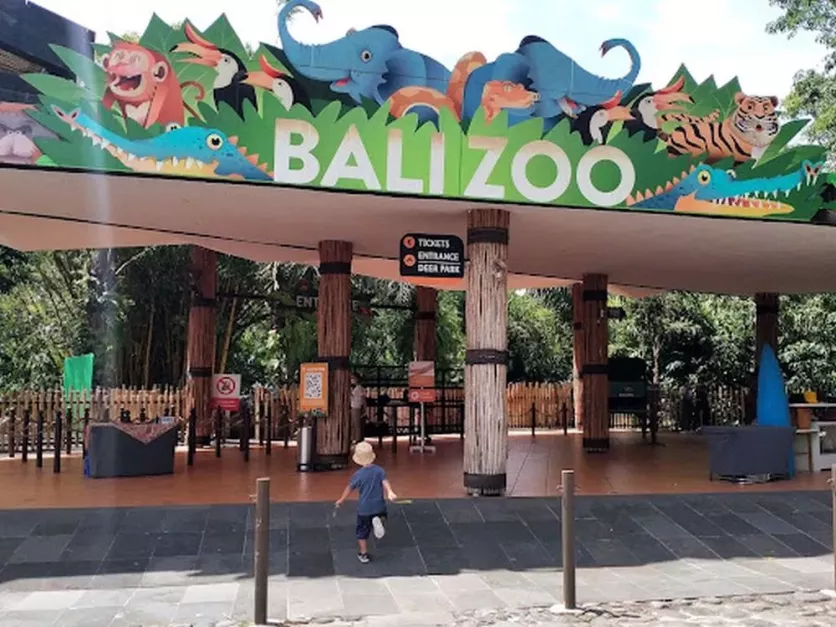
Working hours: 9:00 – 17:00
Ticket prices:
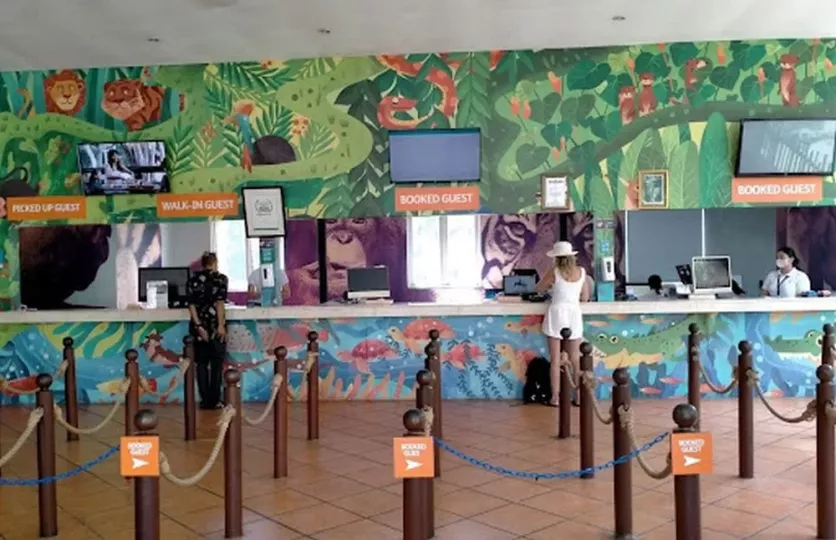
Adult - 395,000 rupiahs, Child - 280,000 rupiahs. With KITAS: Adult - 140,000, Child - 100,000 rupiahs.
Elephant riding for 20 minutes: Adult - 1,100,000 rupiahs, Child - 780,000 rupiahs.
Elephant riding with KITAS: Adult - 410,000 rupiahs, Child - 290,000 rupiahs. There is also a ticket booth near the elephants, and in Indonesia, you can always pay for entertainment on the spot or somewhere nearby.
You can only purchase an annual pass if you have a KITAS visa. Each time you need to bring it with you; at the ticket booth, they ask for documents, make copies, and the number of visits per year is unlimited, starting from the first visit.
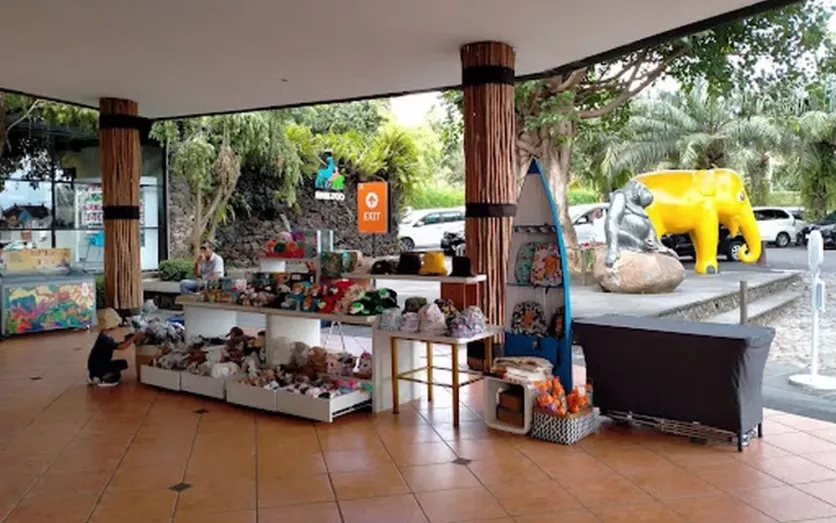
Adult - 275,000 rupiahs, Child - 195,000 rupiahs.
The official zoo website describes additional events with schedules: lectures, presentations, animal encounters, lunch nearby - all of which need to be booked in advance on the website. Animal shows are held daily from 12:00 to 13:00, and bird shows from 15:00 to 16:00 (please check the location at the zoo).
Tickets to the zoo with a transfer can be purchased from the company mybalitrips.com.
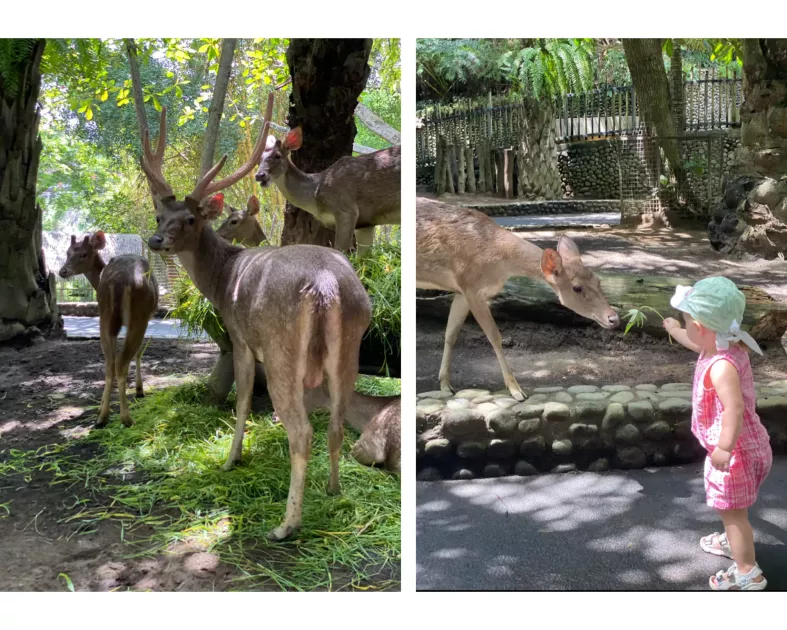
Upon entering, you will immediately find yourself in an area where deer and small kangaroos (wallabies) roam, which you can feed. Next, you will approach the second entrance, divided into two main routes: on the left is the main zoo with most animals, on the right is a bus that takes you to the elephants, and below you will see a small children's water park, the visit to which is included in the price.
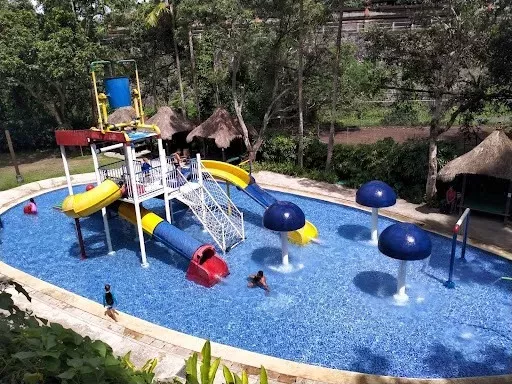
Turn left; on the way up, you will find large Balinese traditional gates, and you can start your tour from here.
The first animals you will see are primates, crocodiles, Bengal tigers, a beautiful cassowary bird with very expressive eyes, as well as other birds and animals if you don't quickly pass by.
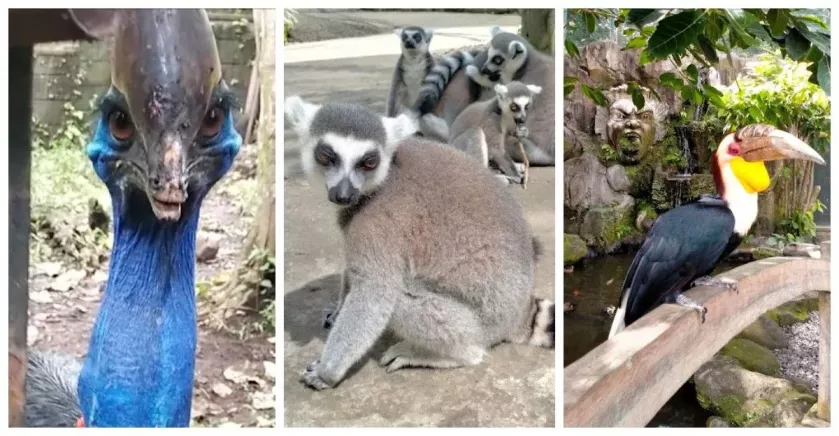
At the entrance, there's a café selling burgers and light desserts. Behind a huge panoramic glass, a lion sometimes sits and roars, creating a mix of fear and fascination.
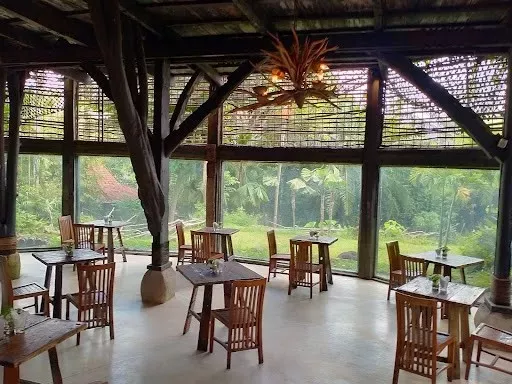
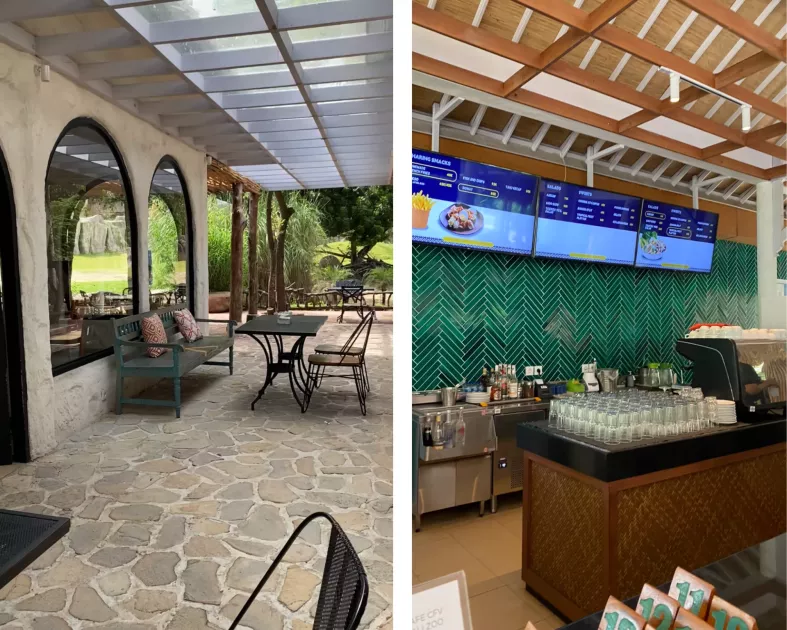
A pair of Bengal tigers also occasionally engage in loud, familial arguments. For 50,000 rupiahs, you can feed them chicken on a long stick, adding some variety to their routine. According to the internet, this pair has already produced offspring—a whole litter of wild adventures.
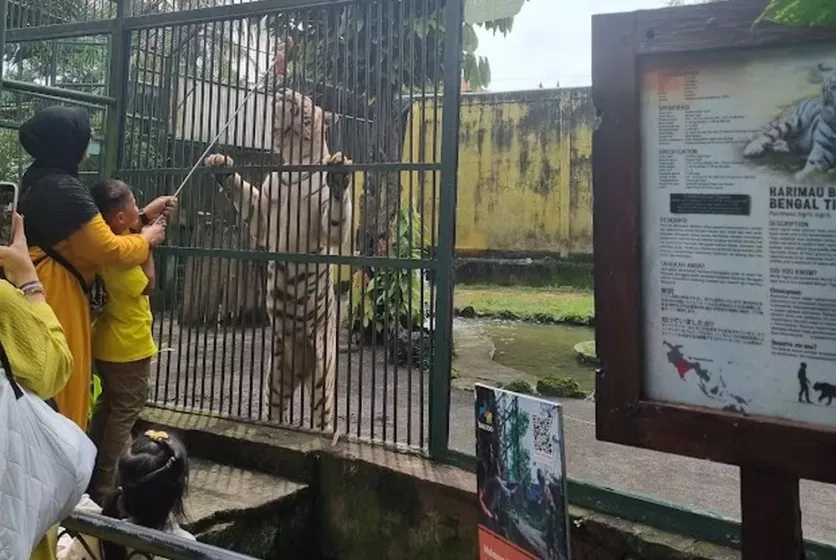
It's worth reminding that, in such places, you need to keep a close eye on children, ensuring they don't run ahead, climb over barriers, or stick their fingers anywhere. Everything is open, and in some places, the fences are not very high.
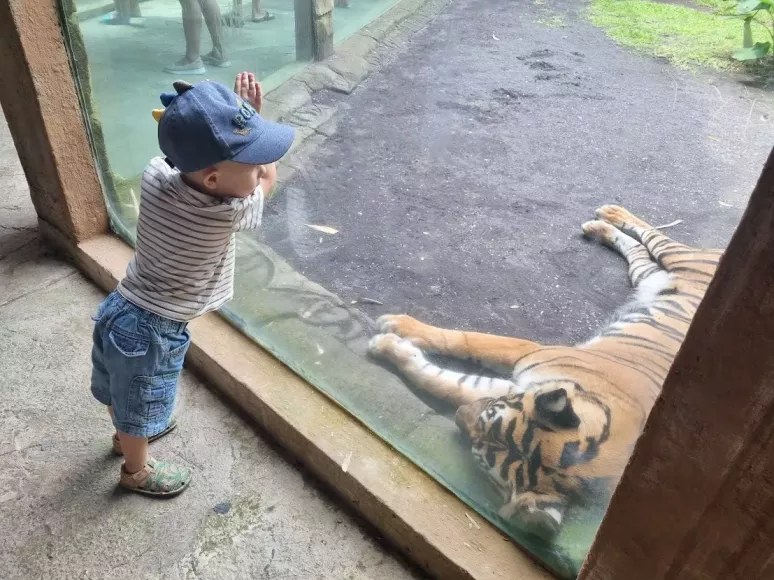
Don't miss the entrance to an interesting pavilion. You'll enter an open area with lemurs, iguanas, a rhinoceros bird, a white peacock, and other creatures. They roam and frolic freely, except for the tiny monkeys—they are in a large cage, or they might get lost.
Lemurs are adorable but shy creatures; you can approach them closely. Employees kindly request not to pet or touch the animals, especially children, and please avoid taking close-up photos with flash, as it could blind them.
Exiting the pavilion, on the left, you'll see cages with parrots and little monkeys. After completing the first round, you'll move to the central part of the zoo, featuring a large spacious restaurant, a shop with beautiful soft animal toys, and branded children's panamas from the zoo.
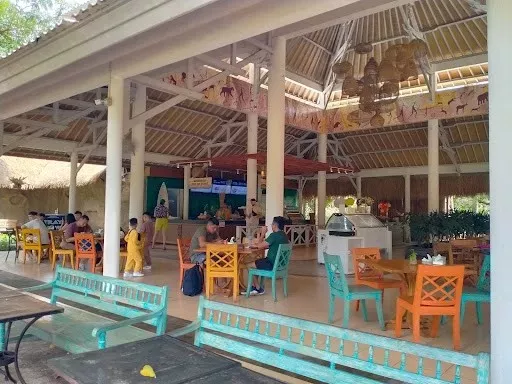
The restaurant offers a sufficient menu selection and a beautiful view of a large clearing with a pond. There's a play area at the entrance, but the main children's playground is elsewhere. You can sit there after the second round; just turn left again as the route goes up. You'll pass by meerkats, a whole group of them, scurrying like little rats and amusingly standing on their hind legs. You can crawl under the dome into the center of their "mini-desert" through a low corridor.
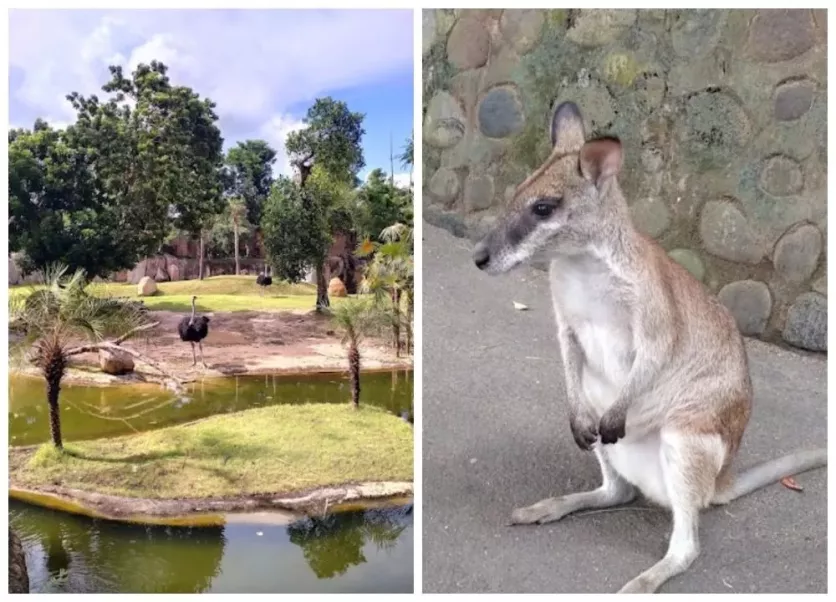
Beyond the meerkats, you enter the savannah: zebras roam a large area, followed by lions, hyenas (all large predators are behind glass). There are small installations for a light immersive experience, where you can press buttons to explore the sounds of lion roars. Then the road turns; you find yourself on a large meadow where ostriches and other birds roam. After completing this circuit, you'll be back at the central restaurant—congratulations, you've covered half the way.
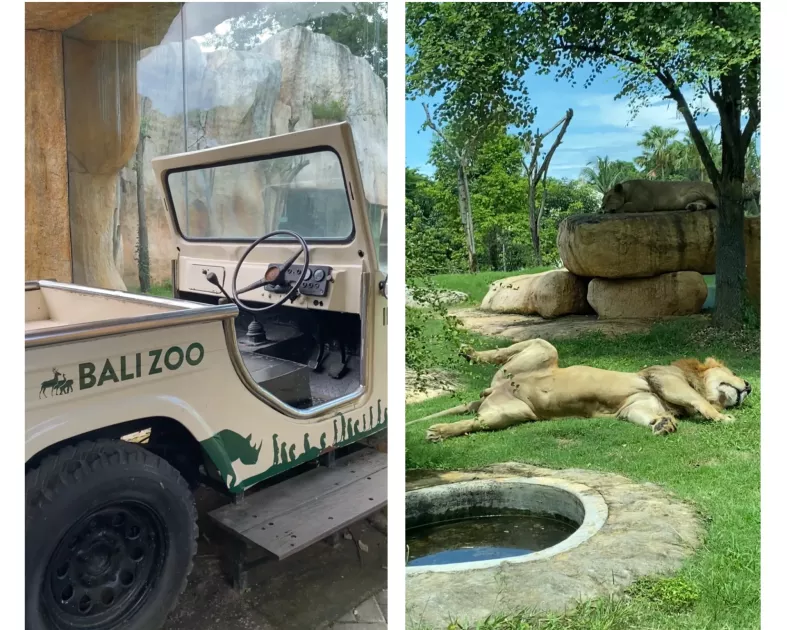
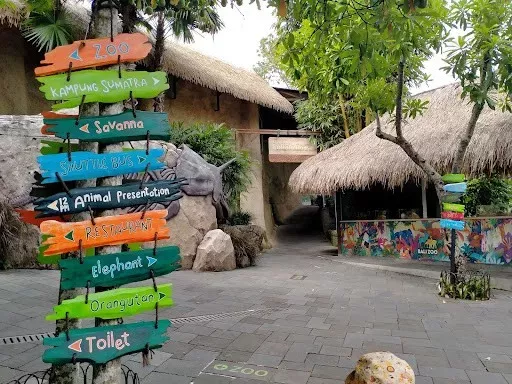
Now you've reached the central entrance, go through another set of gates, and you'll find yourself at a bus stop. A two-story open shuttle bus will take you through another part of the zoo, where there are fewer animals: elephants, orangutans, Malayan bears, and separate enclosures with furry monkeys and tigers.
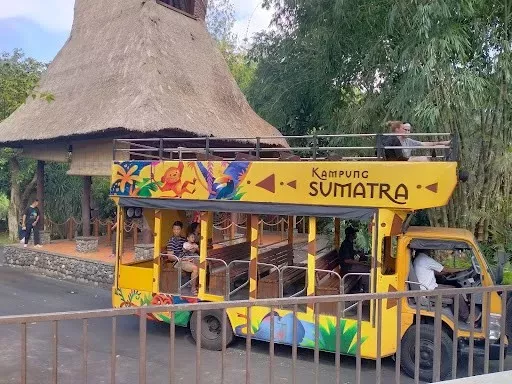
The stop will be near the children's playground and café. The playground is interesting, with ropes to climb, so kids can hang around there for a long time if they get engrossed. Benches and tables nearby allow you to sit comfortably, rest in the shade, and there's one cool thing: above the playground, there's a tube with an iron mesh through which a tiger walks. You can also feed the tiger there.
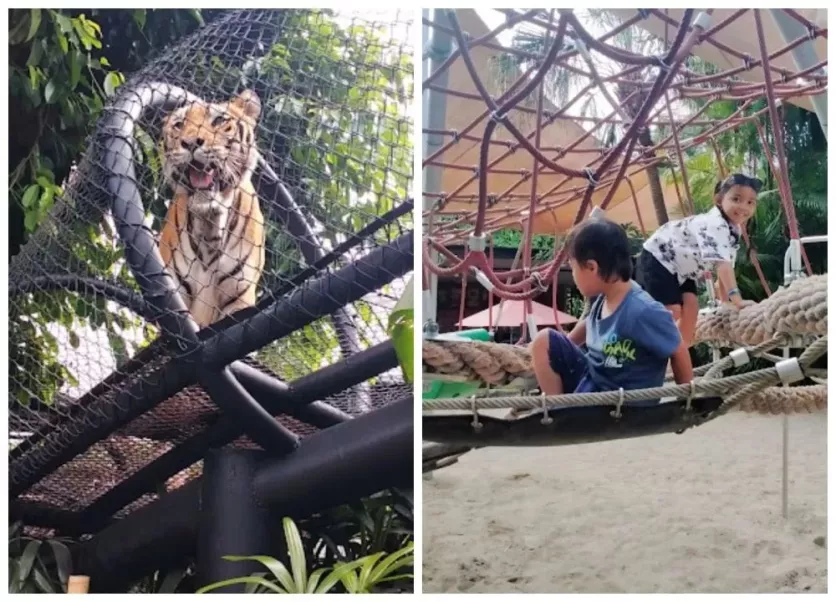
After that, you can continue on your own. In the center of the park, two orangutans live—one is six years old, and the other is fifteen. The older one likes to observe someone's actions, especially those of the staff, and mimic them. Occasionally, they interact with the audience. These are two males; during the day, they play with each other, bring the female to socialize in the morning, and in the evening, they all go to sleep in their apartments.
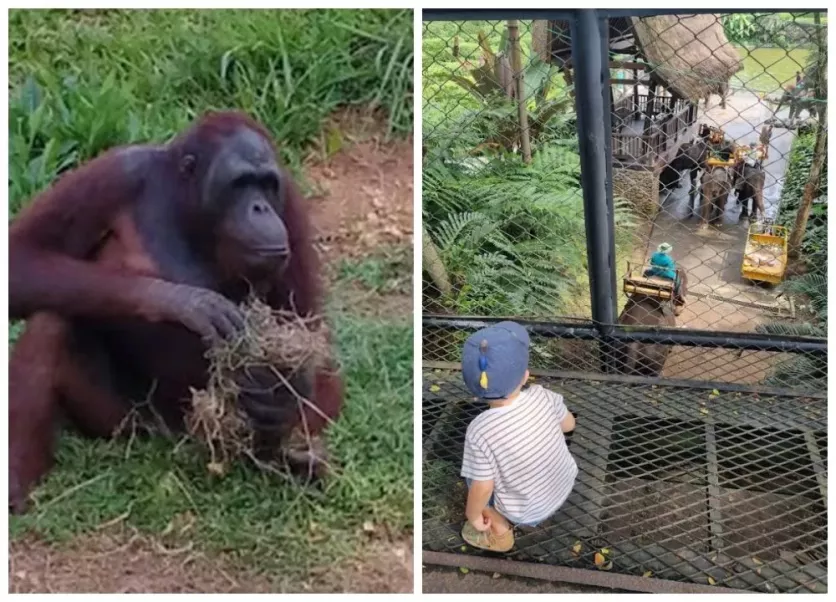
Next on the road is the Malayan bear. It seems burdened by its existence in an enclosed space, and it's quite pitiable. Elephants, on the other hand, might leave the most vivid impression. You can stand next to them, feed them, pet them, take photos, chat with the staff, and, of course, ride them, especially through the water.
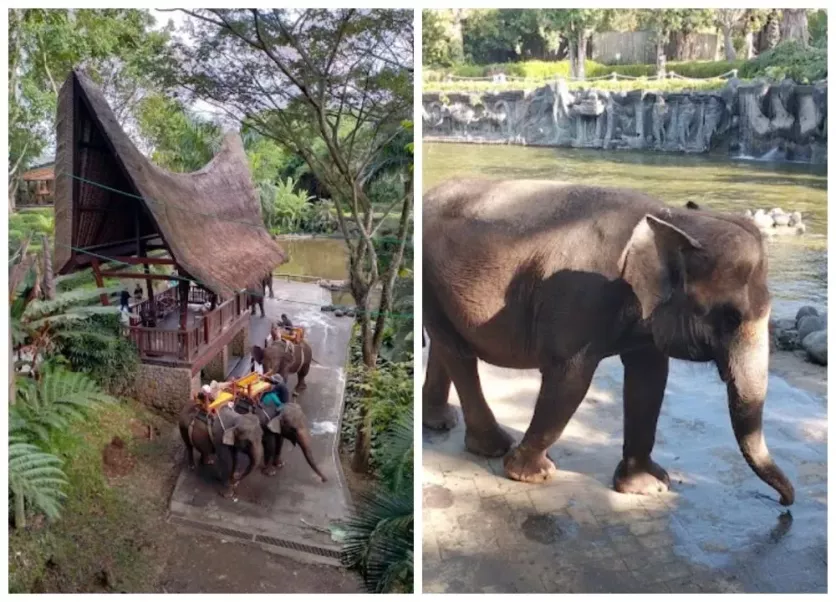
A photographer will capture you against the backdrop of a waterfall when the elephant scoops up water with its trunk, creating a fountain. You'll look just like Indiana Jones from above.
The article doesn't list all the zoo inhabitants; there are many more to explore independently. Don't be late—the last shuttle back is at 4:30 PM. Though walking takes about five to seven minutes, it's not scary, and for adventure seekers, it's a joy. Wishing you a pleasant stroll!
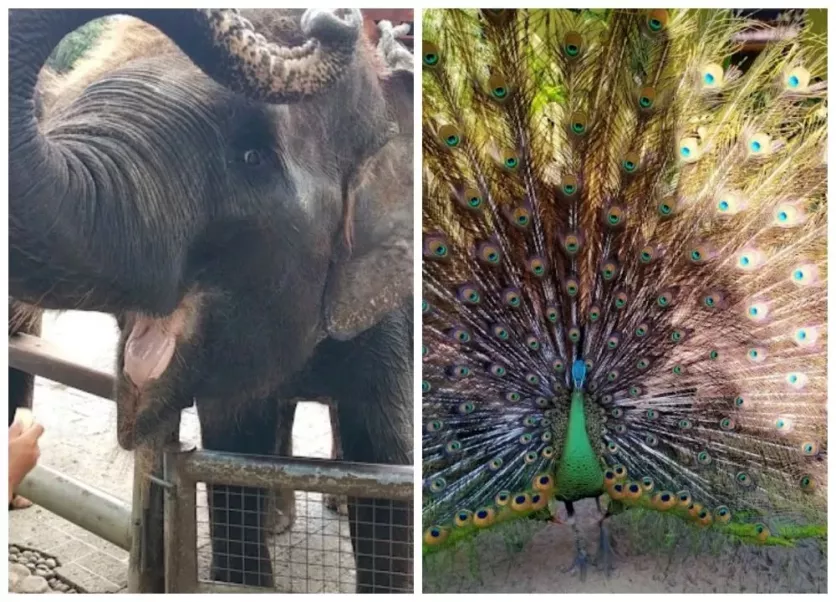
You can add one right now!